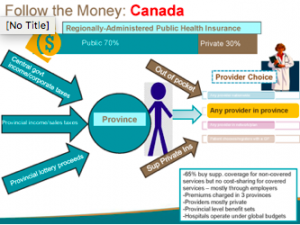In other words, high medical expense people normally would not know they remain in the risk pool. Assuming they have actually maintained continuous coverage, high-risk individuals are anticipated to pay the same price for their health insurance coverage as people who are healthy. In addition to the distinctions in between Obamacare and Trumpcare, there are also crucial variations between the strategies introduced by the House of Representatives vs.
healthcare protection in the future, you will need to be able to find the very best insurance coverage strategy for you and your http://zioneucg257.trexgame.net/the-smart-trick-of-what-is-a-health-care-tax-credit-that-nobody-is-talking-about family. You can compare strategies at eHealth, and deal with our licensed brokers in any state to choose a plan that meets your requirements and spending plan. Our expert services are readily available at no charge to you and we can help you enroll in strategy by phone, through our chat, or online.
Democrats counter that this "strategy" is a phantom, a fantasy, something President Trump and other Republicans keep appealing however never provide. It's as though the GOP states, "We have a strategy to make cars and truck theft illegal!" while its members go around smashing individuals's automobile windows (what is universal health care). On a simply accurate basis, the Democrats are definitely right. 9% Medicare payroll surtax on incomes over that threshold and a 3. 8% tax on net investment income. The latter tax is steeply progressive, with the leading 1% paying 90% of the tax, as financial investment earnings is highly focused with the wealthy. The ACA also developed a penalty tax (associated to the individual required) for individuals without adequate insurance, an excise tax on companies with 50 or more employees who offer insufficient protection, annual costs on health insurance service providers, and the "Cadillac tax" (yet to be carried out as of 2017) on generous employer-sponsored health strategies.
The Republican bills (AHCA and BCRA) basically repeal all of the taxes, penalties and costs and hold off the "Cadillac tax" further. The Tax Policy Center estimated in March 2017 that the AHCA would substantially reduce taxes for the wealthy, with those IRS tax units (an approximation for families) making over $200,000 each year (the top 6%) getting 70.
Those with earnings over $1 million (the leading 0. 4%) would see a tax decline of $51,410 usually, receiving 46% of the benefit. In basic, those with incomes over $50,000 would see a tax cut, while those with earnings listed below $50,000 would see a tax increase. Those with income below $10,000 would see a tax cut as well, but this benefit would be balanced out overall by decreases in Medicaid schedule.
Excitement About What Is Primary Health Care
The Center on Spending Plan and Policy Priorities (CBPP) reported that "Your house expense would represent the biggest transfer in modern U.S. history from low- and moderate-income people to the really rich." CBPP also wrote: "Millionaires would get roughly $40 billion in tax cuts each year ... approximately comparable to the $38 billion that 32 million households in poverty would lose from cuts to their tax credits and Medicaid." Medicaid is the U.S.
It is the main payer of nursing house care. The ACA (current law) broadened Medicaid eligibility; 31 states and the District of Columbia executed the expansion. Approximately 41% of Medicaid enrollees are white, 25% are Hispanic, and 22% are black. The proportion of white recipients in crucial swing states are 67% in Ohio, 59% in Addiction Treatment Facility Michigan, and 58% in Pennsylvania.
The majority of the cost savings (deficit decrease) under AHCA and BCRA is due to reductions in Medicaid spending and protection relative to present law. CBO approximated that there would be 15 million fewer Medicaid enrollees relative to existing law by 2026, the biggest element of the minimized coverage talked about above.
This would lower Medicaid spending in 2036 from 2. 4% GDP under existing law to 1. 6% GDP. The reductions are driven by reduced funding to states for those who ended up being covered under the Medicaid growth in the existing law (ACA), minimizing the inflation index used to compute per-enrollee payments to states, and eliminating protection mandates.
According to scientists at the Milken Institute School of Public Health at George Washington University, the AHCA legislation would lead to a loss of 924,000 tasks by 2026. The group likewise studied the BCRA, which would cost an estimated 1. 45 million jobs by 2026, including over 900,000 in health care.

The Ultimate Guide To Which Of The Following Is Not Correct Regarding Why Health Care Costs So Much?
Even more, gross state products would be $162 billion lower in 2026. States that broadened Medicaid would bear the force of the financial effect, as government funds would be reduced more significantly. Under both the ACA (present law) and the AHCA, CBO reported that the health exchange markets would stay stable (i.
Yale Law School teacher Abbe R. Gluck, the director of the Solomon Center for Health Law and Policy, composes that Republican chosen officials have taken a variety of steps to "undermine" the ACA, producing unpredictability that has most likely negatively impacted registration and insurer involvement, and after that insisting that the exchanges remain in difficulty as an argument for reversing the ACA.
Health insurance coverage author Louise Norris states that Republicans sabotaged the ACA through: Lawsuits, both successful (Medicaid expansion restricted) and unsuccessful (requireds and insurance aids promoted). Suits pending, such as whether cost-sharing subsidies need to be paid. President Trump is threatening not to pay these aids. Avoidance of appropriations for transitional funding (" danger passages") to consistent insurance markets, resulting the personal bankruptcy of numerous co-ops providing insurance.

Reduction to financing for marketing for the 2017 exchange enrollment duration. Addiction Treatment Ongoing persistence, regardless of CBO assertions to the contrary, that the exchanges are unsteady or in a "death spiral". Social Security expenditures would reduce due to earlier death: "CBO also estimates that expenses for Social Security benefits would decrease by about $3 billion over the 20172026 duration." Medicaid expenses would increase due to lower access to contraception.
Every year one in 830 uninsured Americans pass away in a manner which might have been avoided with better health care. A Congressional Budget Plan Workplace report suggests an additional 16 million individuals would be left uninsured leading to 19,277 avoidable deaths. Other uninsured individuals would establish unpleasant persistent conditions or permanent disabilities which might have been avoided with medical insurance.
The smart Trick of What Is Fsa Health Care That Nobody is Talking About
The AHCA will include age-based tax credits for those who earn less than $75,000, or $150,000 for joint filers. The expense would have required insurance business to cover pre-existing conditions. The AHCA used a requirement of 'continuous coverage', specified by a 63-day protection gap, where a person who currently has insurance and is changing insurers will not pay a greater rate with their new insurance provider.